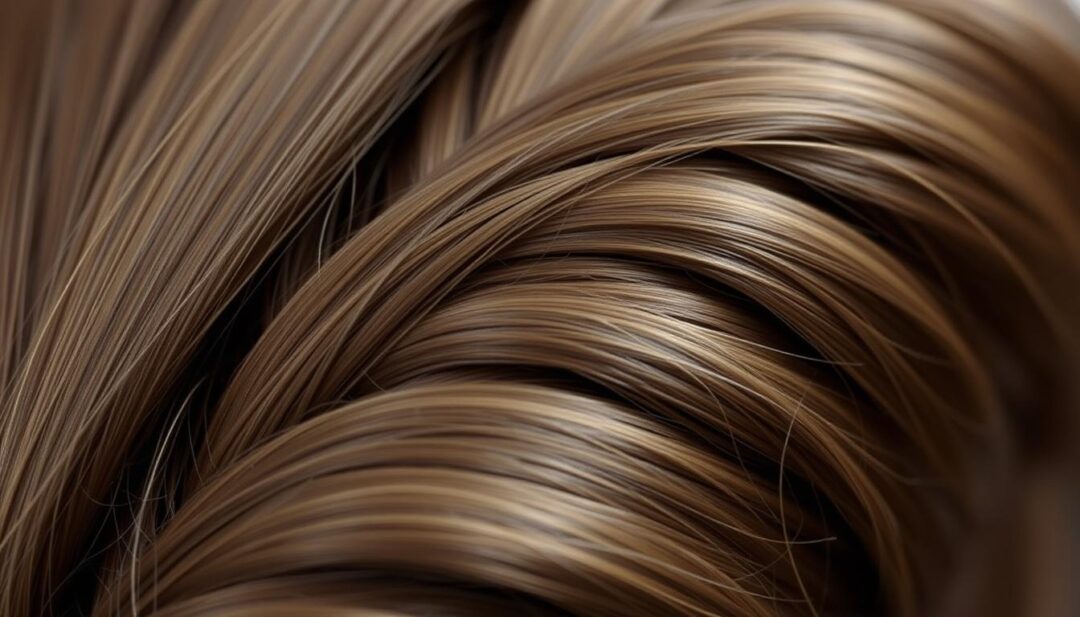Mastering a polished, woven hairstyle isn’t as hard as it looks. With a brush, elastic, and your hands, you’ll learn to create symmetry that lasts all day. This method works for any hair type—thick, thin, or somewhere in between.
Start by detangling your hair. A smooth base ensures clean layers. Separate a small section near the crown, splitting it into three equal parts. Keep tension even—too loose, and it unravels; too tight, and it pulls uncomfortably.
The secret? Add strands gradually as you cross sections left and right. Focus on the center alignment for balance. Your first try might feel awkward, but muscle memory kicks in fast. Even messy attempts lay the groundwork for progress.
You’ll finish with a secure elastic and a style that transitions from gym sessions to dinner dates. Ready to turn theory into action? Let’s break it down.
Getting Started with French Braiding
The secret to flawless braids lies in preparation. Imagine building a house without tools or blueprints – that’s braiding without a plan. Let’s create your toolkit first.
Essential Supplies for Braiding
Grab these six items before starting:
- A wide-tooth comb to smooth tangles without breakage
- Duckbill clips to isolate sections hair stays put
- Thin elastic bands that grip without slipping
- Bobby pins matching your hair color for hidden security
- Light-hold hairspray to tame flyaways
- A cushion-bristle brush for gentle detangling
Preparing Your Hair and Setting Up Your Space
Start with day-old hair – natural oils prevent frizz. Position a mirror at eye level so you see both hands working. Separate damp or dry hair into three sections: left, right, and center.
Clip the side pieces temporarily. Use your comb vertically from roots to ends – this aligns strands better than horizontal brushing. Secure loose layers with pins as you go. Less tugging means happier scalps.
Pro tip: Lay tools on a towel within arm’s reach. No scrambling mid-braid. Now you’re ready to create symmetry that holds from sunrise to sunset.
Understanding the Basics of a french braid tutorial

Every polished hairstyle begins with three equal parts. Think of them as building blocks – identical in size, tension, and purpose. This foundation determines whether your creation holds or unravels.
The Three-Strand Foundation
Divide your hair into three matching sections. Hold them like paintbrush handles – firm but relaxed. Cross the right strand over the center. Then repeat with the left. Keep movements small. Your hands control the rhythm.
Uneven pieces create lopsided results. Measure each addition against your pinky width. Too thick? Split it. Too thin? Combine with neighboring strands. Consistency turns chaos into order.
Incorporating Additional Hair Sections
Grab new hair from the right side as you cross that strand. Mirror the motion on the left. Imagine gathering sunlight through blinds – precise, measured strips. Each addition blends seamlessly into the pattern.
Practice this pickup sequence:
- Cross right section over center
- Collect hair from right scalp area
- Repeat with left section
- Maintain equal tension throughout
Your thumbs become guides. Fingers act as combs. Within ten repetitions, the motion feels automatic. What starts as careful steps becomes fluid artistry.
Step-by-Step Guide to French Braid Technique
Creating a polished braid is about precision, not perfection. Start at the crown and work downward, keeping your motions deliberate. This method builds muscle memory while maintaining control over each strand.
Initiating the Cross-Over Technique
Hold three equal sections between your fingers. Cross the right piece over the center, then the left over the new center. Keep tension steady—like holding a delicate ribbon. Small, controlled movements prevent uneven gaps.
Adding Hair on Both Sides
Grab a bit of hair from the right side as you cross that section. Mirror the action on the left. Work toward the nape, adding thin layers each time. Your thumbs act as guides, tucking stray hairs without disrupting the pattern.
Securing the Final Braid
Once you reach the ends, wrap a clear band tightly. For loose pieces, slide bobby pins under the braid’s base. Adjust slowly—rushing here undoes progress. First attempts might feel messy, but consistency refines the result.
Pro tip: Use your pinky to measure added sections. Too thick? Split them. Too thin? Combine with neighboring strands. Every adjustment brings you closer to symmetry that lasts all day.
Tips for an Even and Tidy Hairstyle
A flawless finish starts with smart fixes, not magic. Small adjustments transform wispy strands into sleek results. Let’s solve common issues before they unravel your hard work.
Managing Tangles and Flyaways
Start by brushing upward from the ends. This prevents tugging at the roots. Clip sections as you go – chaos thrives in loose hair.
For flyaways, spray hairspray onto a brush. Glide it over the surface instead of misting directly. This tames frizz without stiffness. Bobby pins become secret weapons – slide them under stray hairs at the center line.
Using Products for a Polished Look
Light-hold spray works like invisible glue. Apply it to your palms first. Smooth over the sides of your head after braiding.
Check layers as you go. If one side feels thicker, redistribute strands early. A cushion brush fixes uneven spots without restarting.
Remember: products enhance, don’t disguise. Use the right amount – a pea-sized drop of serum seals ends. Too much weighs hair down. Too little lets chaos creep back in.
French Braiding for Different Hair Types and Ages

Your hair’s unique texture isn’t a barrier—it’s an opportunity. Whether working with tight coils or silky strands, slight adjustments create lasting results. The same logic applies when styling children’s hair: simplicity beats complexity every time.
Tailoring Methods to Hair Textures
Fine hair slips easily? Secure each added section with bobby pins before crossing strands. Thick textures need wider-tooth combs to prevent tugging. Reduce the number of sections for curly hair—larger chunks hold better.
For straight styles, start at the crown. Wavy or coiled hair often looks fuller when braided from the nape. Use your left hand to smooth layers as you work. Match your elastic band size to hair density—thin bands for light textures, wider ones for volume.
Kid-Friendly Styling Strategies
Turn braiding into playtime. Create pigtails first—they’re simpler than full styles. Let kids choose colorful bands or sparkly pins. Keep sessions short: three passes per side, then secure.
Use a cushion brush for tender scalps. Hold sections near the ends to minimize pulling. Celebrate “messy wins”—imperfections add charm. With practice, you’ll build styles that survive recess and nap time.
Creative Variations to Elevate Your Look
Your hairstyle becomes art when you play with patterns and textures. Let’s transform basic weaving into head-turning designs using smart tweaks and playful extras.
Spark Interest With Strategic Add-Ons
Thread satin ribbons through your first three sections before crossing strands. The color peeks through like buried treasure. Clip metallic pins where layers meet – they highlight your technique without overwhelming it.
Try this: Weave a gold chain into the outer layer as you braid. Secure ends with clear elastics. It takes 90 seconds extra but makes your style gallery-worthy.
Reinvent Classic Patterns
Swap the standard overhand motion for a waterfall effect. Drop sections strategically to create cascading layers. Or try a fishtail pattern – split hair into two parts instead of three, crossing thin bits from each side.
Thicker hair? Add a fourth section for dimensional depth. Fine textures shine in twisted rope styles. Every adjustment starts with the same foundation but ends somewhere extraordinary.
Your brush becomes a paintbrush here. Alternate tight and loose sections for organic texture. Wrap the final piece around a bun or let it flow free. The best part? Mistakes often birth better ideas than plans.
Wrapping Up Your French Braiding Journey
You’ve now got the tools to turn basic strands into structured art. Each step—from that first clip securing your center section to the final tug on the elastic—builds confidence through repetition. Time reveals progress: what felt awkward yesterday becomes second nature tomorrow.
Remember the core rules. Balance added hair from each side equally. Keep your center alignment sharp—it’s the backbone of symmetry. Those early attempts where strands slipped? They taught you tension control. Now you know when to tighten a bit or loosen for comfort.
Details define the look. A well-placed clip tames flyaways. Smoothing sections before crossing prevents gaps. Adjusting the left section’s thickness? That’s mastery in motion.
Creativity thrives here. Swap elastics for ribbons. Add metallic pins where braids meet. Matrix pros suggest pearls or flowers for personality—your canvas, your rules.
You’ve graduated from theory to execution. Next stop: reinventing classics with the precision you’ve earned. Ready?



